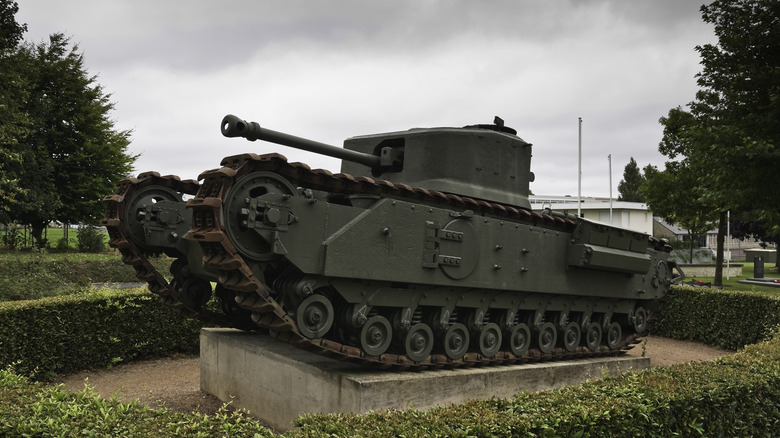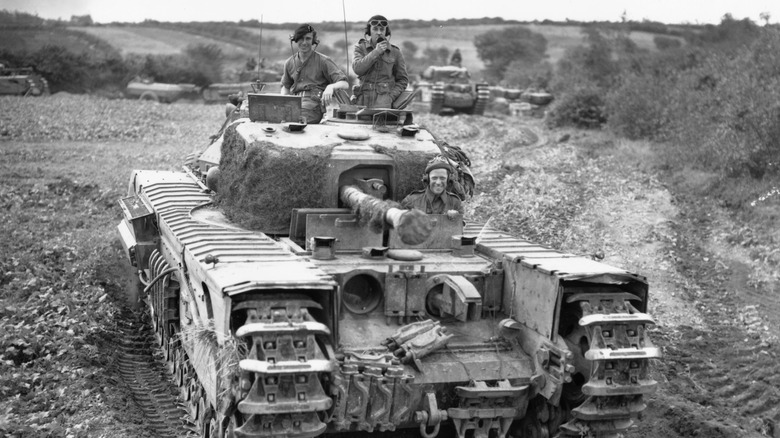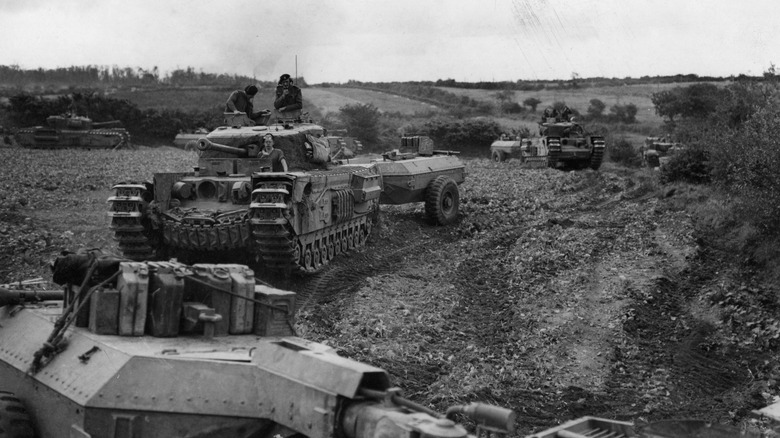British Firestarter: The History Behind The Churchill Crocodile Tank
Ground warfare was made infinitely more effective — as well as more gruesome — by the invention of the tank. The first one ever introduced in battle was a 1915 British invention known as "Little Willie." It was small, clunky, and not wildly effective, but it kicked off a history of innovation that has carried through to the 2020s. Used in the trenches of World War I, this "land boat" was commissioned by none other than Winston Churchill who, at the time, was serving as the minister of the Royal Navy. By the time World War II kicked off, tank warfare had dramatically improved, as did Churchill's station. He had risen to Prime Minister.
It's fitting then that a line of tanks produced were named for the British Bulldog, with one particularly fearsome vehicle named for an aggressive reptile: the Churchill Crocodile Tank. Not only could this beast tear across battlefield, but it also brought the firepower.
The Crocodile's specs
The development of the Crocodile was overseen by Maj. Gen. Sir Percy Hobart in 1943. Weighing in at 45 tons, it also carried a 13,000-pound trailer. But it wasn't known for its behemoth size. The tracked vehicle boasted "a flame projector which replaced the front-mounted Besa machine gun, which was connected to an armored trailer via an armored pipe mounted along the underside of the tank," according to Normandy War Guide. This terrifying addition was fueled by almost 2,000 liters of fuel that could fire off 80 blasts lasting one second each.
During the war, 800 Crocodiles were manufactured. They were crewed by five troops and had another armament in addition to the flamethrower – two Besa machine guns. After seeing a test of the tank, Lt. Andrew Wilson wrote, "A little burst of fire, like a struck match above the nozzle, tested the spark and the tank began to move forward. It went towards the first target, a concrete pillbox. Suddenly there was rushing in the air, a vicious hiss."
What happened to the Croc?
Present during the D-Day invasion of Normandy, France, the tank traveled well into Europe alongside Allied Forces. A little more than one out of four were set aside for use in the Pacific Theater as well. Despite the fact that it was a fearsome tank that lived up to its purpose, it also played a heavy role in psychological warfare. The sight of one on a battlefield spread terror among enemy troops who feared the "liquid fire" it spit. They became known as "Hobart's Funnies" after Hobart, who was the 79th Armoured Division commander.
The Crocodile remained in commission until the 1950s, but were retired early into the decade. Now they are scattered throughout World War II museums around the world. It wasn't the only flame-throwing tank. Militaries around the world experimented with the technology, but none had a name or reputation quite so fearsome.


